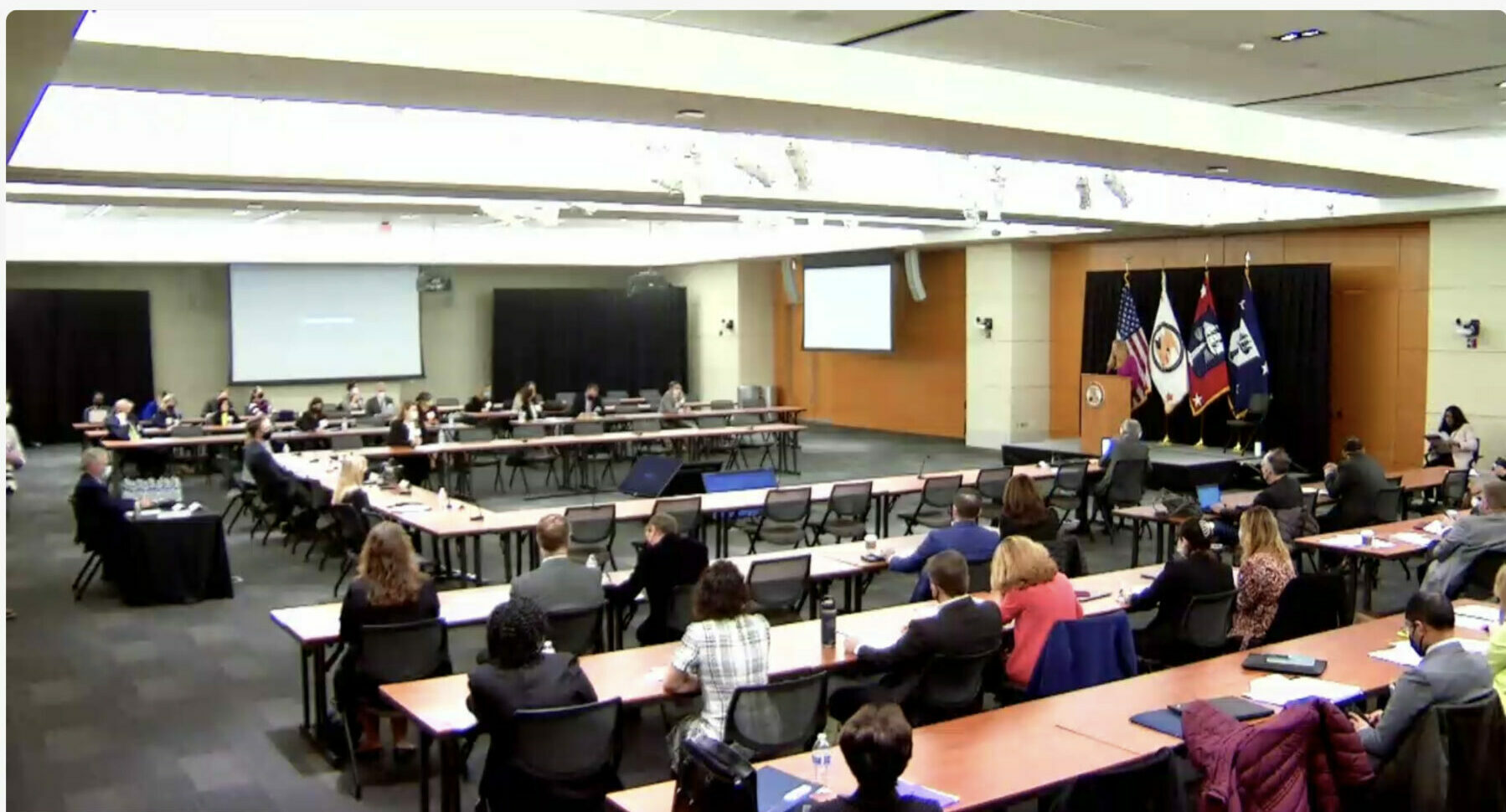Time to Terminate Obviousness-Type Double Patenting
“There can be no debate that ODP rejections of patent applications stem from a judicially-created doctrine not found in the patent statutes. As such, relatively recent Supreme Court decisions support complete and total discontinuation of these rejections.”
While obviousness-type double patenting (ODP) has a long history, Supreme Court precedent and common sense make it clear that the time has come to put ODP to rest. The original rationale for it has long passed, and it is a judicially-created exception to the patent statute that cannot stand. This dinosaur policy of patent law should be put down by the Federal Circuit, Congressional action, or the Supreme Court.
History of ODP
More than 170 years ago, the U.S. Supreme Court considered double patenting by Samuel Morse for his Morse code invention. In O’Reilly v. Morse, 56 U.S. (15 How.) 62 (1853) (sometimes referred to as The Telegraph Case), the Court reviewed two related patents, the first issued in 1840 claiming any method of transmitting information using electromagnets, and the second issued in 1846 claiming a more specific method for transmitting information. The Court reasoned that an inventor cannot extend his monopoly beyond the time permitted by law through a second patent claiming an improvement that is covered by the first patent. 56 U.S. at 114. Then the Court concluded that the Morse second patent was not an impermissible extension of the first patent.
The Court of Customs and Patent Appeals (CCPA, predecessor to the Court of Appeals for the Federal Circuit, CAFC), discussed double patenting numerous time, the earliest being in its 1963 decision in In re Zickendraht, 319 F.2d 225, where the claims of the second patent were closely related to the claims of the first patent, but not patentably distinguishable. Id. at 232. Judge Rich, in a concurring opinion, noted that a terminal disclaimer could be filed to avoid a double patenting rejection. Similarly, the next year the CCPA ruled that while a second patent for an obvious variation of the first patent deprives the public of the right to use the invention upon expiration of the first patent, a terminal disclaimer precludes an extension of the patentee’s term, since the patents expire simultaneously. In re Robeson, 331 F.2d 610, 614 (CCPA 1964). See also the frequently cited ODP case In re Vogel, 422 F.2d 438 (CCPA 1970) where the Court explained that if the patent applicant is claiming an obvious variation of the invention in an earlier patent, then a terminal disclaimer is required to prevent an extension of the right to exclude others from practicing the first claimed invention. Id. at 441.
All these cases are before 1995 when the U.S. patent laws were brought into conformity with the World Trade Organization’s Agreement on Trade-Related Aspects of Intellectual Property Rights (TRIPS), , which changed the patent term from 17 years after issuance to 20 years from the application filing date. Since continuation and divisional applications all have the same filing date as the parent application, these applications normally will all expire at the same time, such that there is no extension of the “monopoly’ beyond the life of the first patent. Thus, the rationale for ODP and terminal disclaimers no longer exists.
Historical Judicial Actions Changing Patent Rights
Generally, the U.S. Court of Appeals for the Federal Circuit is the court of last resort on patent litigation, which often interprets the patent laws. In rare instances, the U.S. Supreme Court will decide patent issues that often lead to significant changes in patent owners’ rights. For example, before 2006, permanent injunctions against patent infringers were nearly automatic to a prevailing patent owner. But that changed with the SCOTUS ruling in eBay Inc. v. MercExchange, L.L.C., 547 U.S. 388 (2006), which raised the bar substantially for injunctions, even after a finding of infringement. Similarly, the test for determining obviousness of a claimed invention was modified beyond the traditional “teaching, suggestion, motivation” test, to one merely requiring a “rational underpinning” to combine prior art references, and sometimes just simple “common sense.” KSR International Co. v. Teleflex Inc., et al., 550 U.S. 398 (2007). And of course, much debate has arisen from the change in patent eligibility brought on by the trilogy of Mayo Collaborative Servs. v. Prometheus Labs., 566 U.S. 66 (2012); Association for Molecular Pathology v. Myriad Genetics, 133 S. Ct. 2107 (2013); and Alice Corp. Pty. v. CLS Bank, 134 S. Ct. 2347 (2014).
As Judge Pauline Newman (who has sat on the bench for the Federal Circuit since 1984) recently remarked at the May Patent Litigation Masters seminar sponsored by IPWatchdog, “where the Supreme Court has entered the arena, it befalls the Federal Circuit to apply any new principles stated by the Supreme Court” to the patent issues presented to the Federal Circuit. This premise seems indisputable, and the Supreme Court has spoken in cases which should lead to abolishment of ODP.
Supreme Court Precedent to Terminate ODP
There can be no debate that ODP rejections of patent applications stem from a judicially-created doctrine not found in the patent statutes. As such, relatively recent Supreme Court decisions support complete and total discontinuation of these rejections.
First, in a non-patent case, Henry Schein, Inc. v. Archer & White, Inc., 139 S. Ct. 534 (2019), the Supreme Court considered the 1925 statute known as the Federal Arbitration Act. The case involved a judicially created exception to the statutory text. The Court stated that it was bound by the Congression language of the statute, and could not redesign or rewrite the statute. The Court concluded that public policy cannot justify exceptions so as to supersede the statutory text.
Second, the Supreme Court specifically addressed the patent statutes in Amgen Inc. v. Sanofi, 598 U.S. 594 (2023). This case involved the enablement requirement for patent applications, 35 U.S.C §112. The Court acknowledged that Congress has the sole power to enact patent legislation, as empowered by Article 1, Section 8, Clause 8 of the Constitution. In consideration of the §112(a) requirement for a full, clear, and concise description of the invention, the Court stated that judges cannot add to nor subtract from the requirements for obtaining a patent that Congress has prescribed. Thus, the Court concluded that its only duty is to apply the statutory mandate faithfully, since patent policy judgement belongs to Congress.
Further, the Supreme Court has more than once cautioned that courts ‘should not read into the patent laws limitations and conditions which the legislature has not expressed. See Bilski v. Kappos, 561 U.S. 593, 602-603, 612 (2010); Diamond v. Diehr, 450 U. S. 175, 182 (1981); and Diamond v. Chakrabarty, 447 U.S. 303. 308 (1980)
Accordingly, despite the long history of ODP, these principals set forth by the Supreme Court in Henry Schein, Amgen, Bilski, Dierh, and Chakrabarty, collectively, lead to the conclusion that there can be no judicially-created exceptions to the patent statutes. Therefore, ODP must die.
Image Source: Deposit Photos
Author: gustavofrazao
Image ID: 84030280






